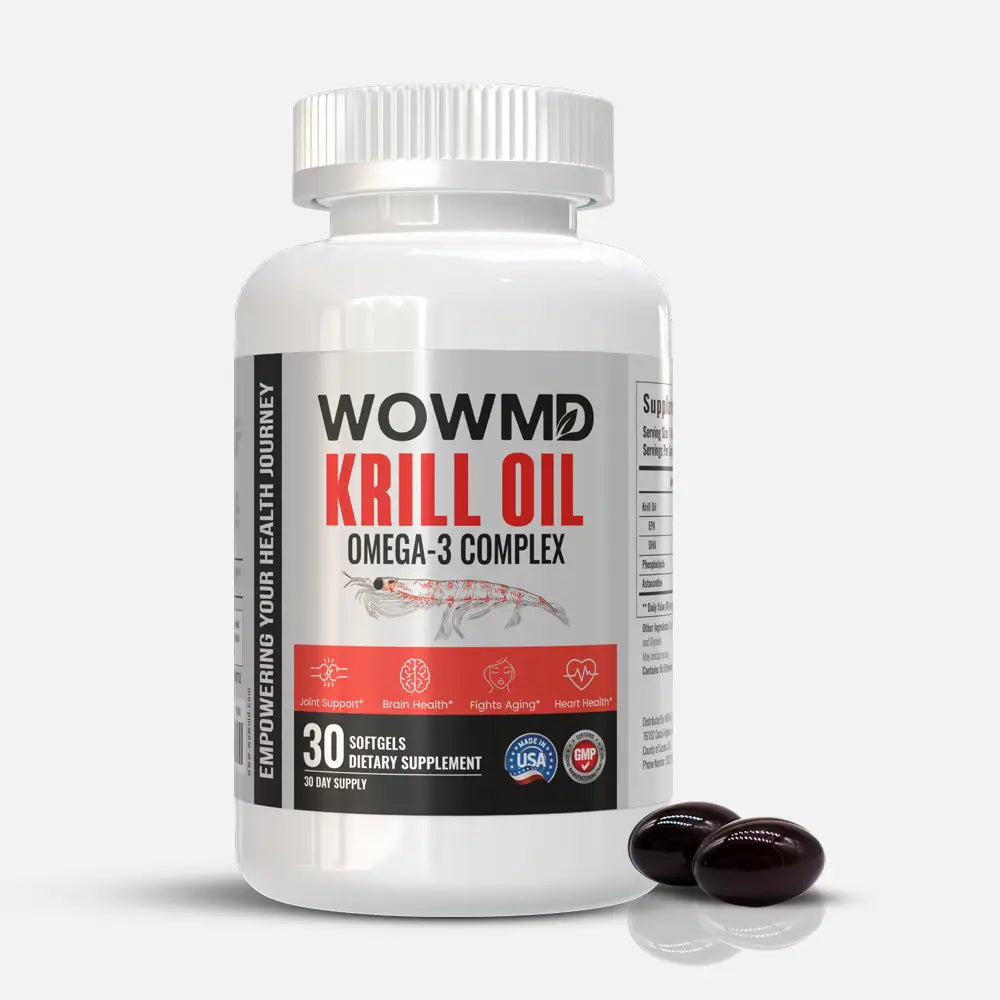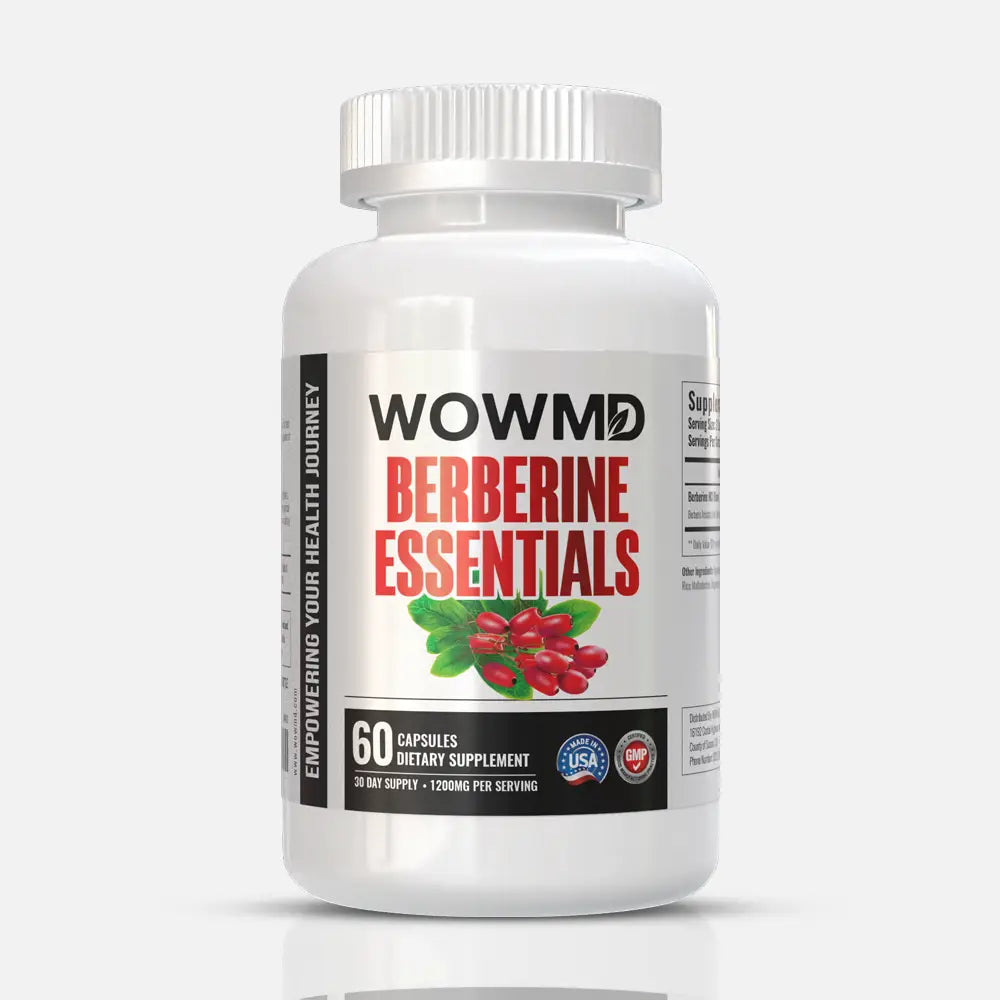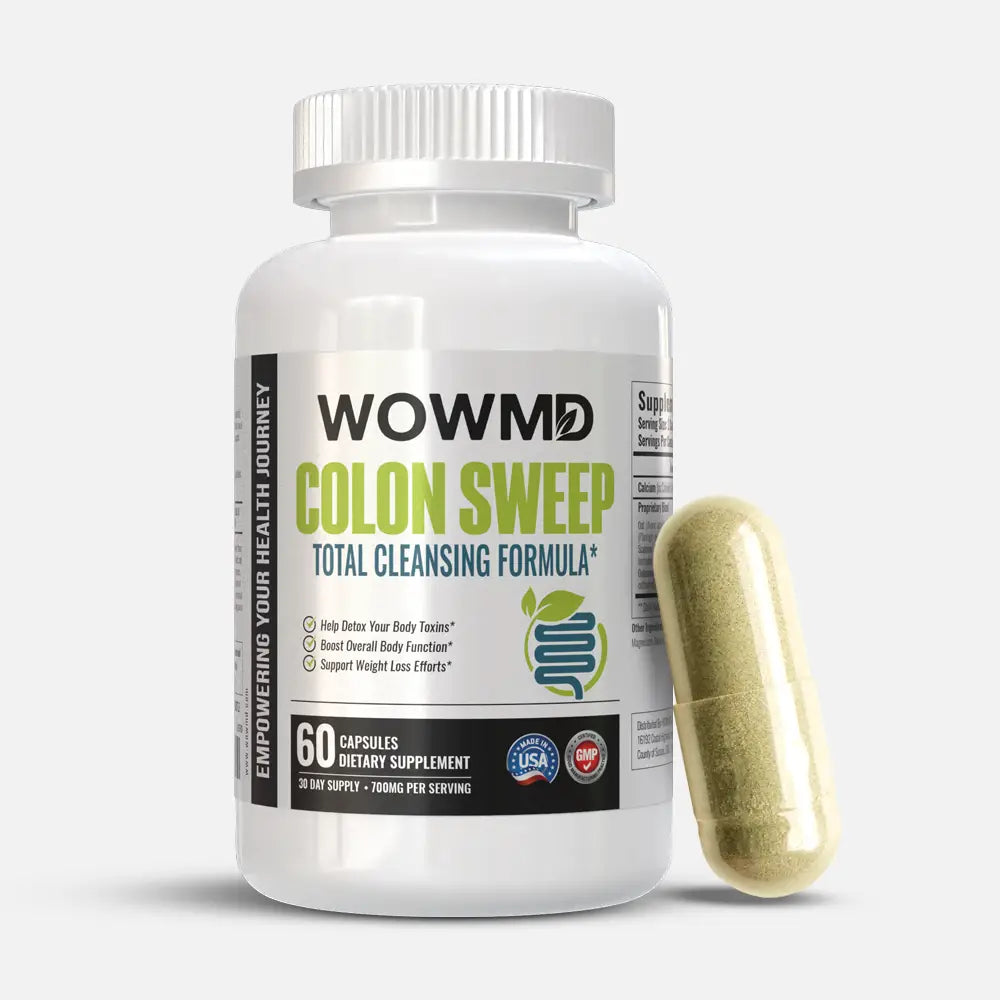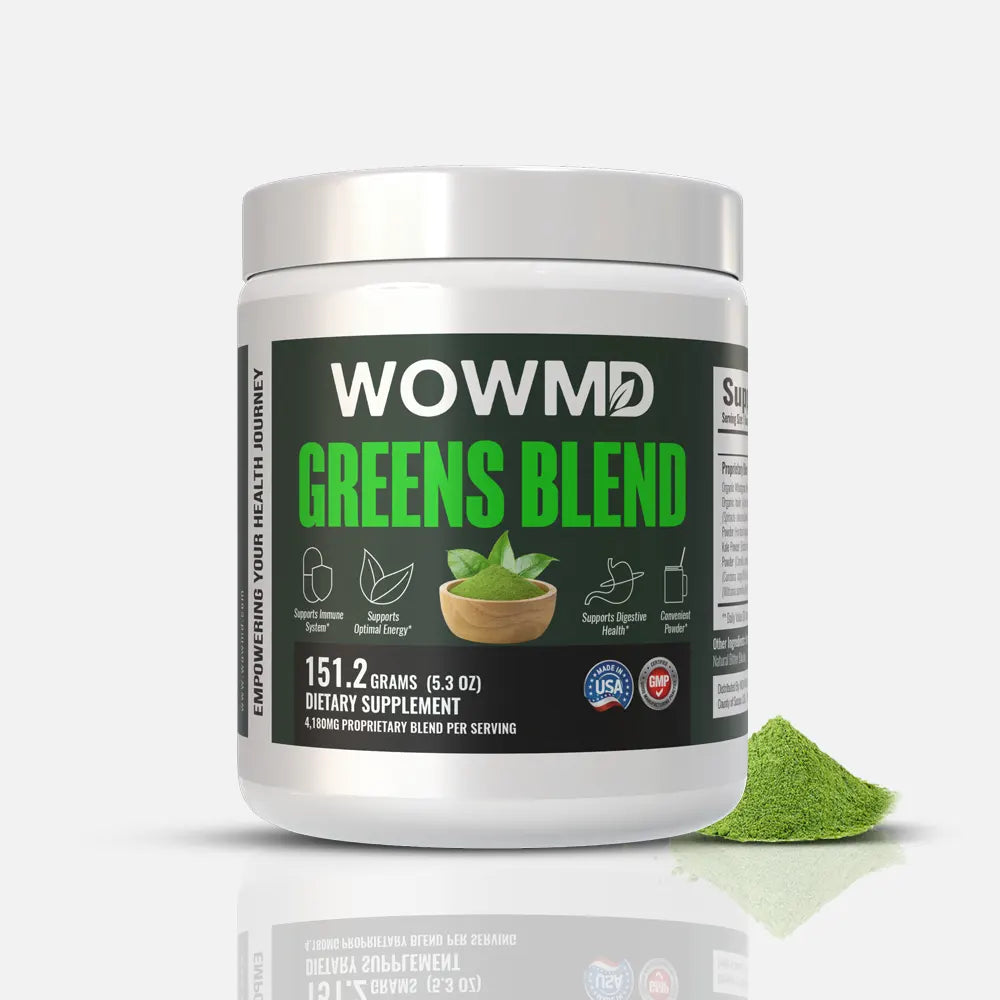The Ultimate Guide to Vitamin D: Benefits, Deficiency Risks & Safe Intake Levels
Vitamin D, often called the 'sunshine vitamin,' plays a crucial role in overall health. It is essential for bone strength, immune function, and even mood regulation. This article serves as the ultimate guide to understanding its benefits and potential risks.

Vitamin D is essential for bone strength, immune function, and overall health. Known as "the sunshine vitamin," the body produces it when the skin is exposed to UVB rays.
However, factors like skin tone, location, and sunscreen use can block Vitamin D absorption, which makes it difficult to get enough from sunlight alone.
Since very few foods provide sufficient Vitamin D, many people remain deficient. In fact, about 42% of people in the U.S. have low levels.
This guide breaks down everything you need to know, including the best ways to get Vitamin D, its benefits, and how to avoid deficiency.
What Is Vitamin D?
Vitamin D is a fat-soluble vitamin that also functions as a hormone in the body. It regulates calcium and phosphorus levels, which support bone health, muscle function, and metabolism.
Unlike most vitamins that must come from food, the body can produce Vitamin D when exposed to sunlight.
There are two main types of Vitamin D: Vitamin D2 (ergocalciferol) and Vitamin D3 (cholecalciferol). Both forms help increase blood levels of Vitamin D, but they are not the same.
Vitamin D2 (Ergocalciferol) is found in plant-based sources like mushrooms and fortified foods. They are less effective at raising Vitamin D levels.
On the other hand, Vitamin D3 (Cholecalciferol) is naturally produced in the skin after sun exposure but you can also find it in fatty fish, egg yolks, and supplements. The advantage of Vitamin D3 is that it remains in the bloodstream longer and is more effective than D2.
How Does the Body Produce Vitamin D?
The body produces Vitamin D through a natural process that begins in the skin. Sunlight exposure triggers a reaction where cholesterol in the skin converts into Vitamin D3 (cholecalciferol).
This form then moves to the liver, which is processed into calcidiol, and later to the kidneys, where it becomes its active form—calcitriol. The active version helps regulate calcium absorption and supports several functions, including bone strength and immune health.
Since Vitamin D synthesis through sunlight is not always reliable, you can always get more from dietary sources and D3 supplements.
Health Benefits of Vitamin D
Why do we need Vitamin D? Vitamin D involves many bodily functions beyond bone health. Here are the key Vitamin D benefits:
- Stronger bones and reduced fracture risk: Adequate Vitamin D3 helps maintain bone density which reduces the risk of osteoporosis and fractures in older adults.
- Improved muscle strength: Studies suggest that Vitamin D can help with better muscle function, which may reduce the likelihood of falls in older individuals.
- Lower risk of cardiovascular diseases: Some research shows that sufficient Vitamin D levels support heart health and may help regulate blood pressure.
- Better immune function: Vitamin D health benefits include an improved immune response that reduces susceptibility to infections and inflammation-related conditions.
- Reduced risk of type 1 diabetes: Early-life Vitamin D supplementation has been linked to a lower risk of developing type 1 diabetes.
- Cancer risk reduction: Some studies suggest that Vitamin D3 can lower the risk of certain cancers, particularly colorectal and breast cancer.
- Improved mood and mental health: Adequate Vitamin D levels help regulate serotonin, which improves mood and reduces depressive symptoms.
While evidence supports these Vitamin D benefits, further studies are needed to confirm specific effects.
Where Can You Get Vitamin D?
The body gets Vitamin D through sunlight exposure, certain foods, and supplements.
Sunlight Exposure
What gives you Vitamin D the most? The primary source is sunlight. 10-30 minutes of midday sun exposure on the arms, face, or legs a few times per week helps maintain levels.
However, excessive sun exposure increases the risk of skin damage, which makes dietary sources and supplements necessary for some individuals.
Dietary Sources
You can also get vitamin D from food, but meeting the daily requirement might be difficult through this alone. Here are some foods that naturally contain Vitamin D.
- Fatty fish (salmon, mackerel, sardines)
- Fortified foods (milk, orange juice, cereals)
- Egg yolks
- Mushrooms (contain Vitamin D2)
Supplements
People with low Vitamin D levels or limited sun exposure may need supplements. You might be asking, which Vitamin D should I take? Vitamin D3 (cholecalciferol) is more effective than Vitamin D2 at raising blood levels.
D3 supplements (cholecalciferol) come from animal sources, while Vitamin D2 (ergocalciferol) is plant-based.
Risk Factors for Vitamin D Deficiency
What blocks Vitamin D absorption? Several factors increase the risk of Vitamin D deficiency:
- Limited sun exposure: People who spend most of their time indoors, wear protective clothing, or live in low-sunlight regions may not make enough Vitamin D.
- Darker skin tones: Increased melanin reduces Vitamin D3 production from UVB rays.
- Age-related changes: The skin becomes less efficient at producing Vitamin D3 over time.
- Certain health conditions: Disorders like Crohn’s disease, celiac disease, and kidney disease affect Vitamin D absorption.
- Dietary habits: A lack of Vitamin D-rich foods can contribute to deficiency.
How Do You Know If You Have Vitamin D Deficiency?
Low Vitamin D levels can affect multiple body functions. This may lead to noticeable symptoms and long-term health risks.
However, the effects of Vitamin D deficiency are often subtle and may take time to develop.
Some of the most noticeable signs include:
- Fatigue and low energy
- Muscle weakness and bone pain
- Frequent illnesses and weak immune response
Severe deficiency may lead to:
- Rickets (in Children): Weak, soft bones causing growth issues.
- Osteomalacia (in Adults): Bone pain and muscle weakness.
- Osteoporosis & Increased Fracture Risk: Loss of bone density.
Before and After Vitamin D Deficiency Face: Some people report dull, tired-looking skin when deficient. Restoring optimal levels can improve your skin appearance, energy, and overall health.
You can confirm Vitamin D deficiency through Blood tests.
Recommended Daily Allowance and Safe Intake Levels
What Is IU in Vitamins?
The IU (International Unit) is a standard measurement used for vitamins and other substances to indicate biological activity rather than weight or volume.
The IU value helps compare the potency of different forms of Vitamin D. For Vitamin D, 1 IU is equivalent to 0.025 micrograms (mcg).
The amount of Vitamin D needed varies by age, health status, and sunlight exposure. Below is a table outlining the recommended daily intake and the safe upper limits to avoid toxicity.
| Age Group | Recommended Daily Intake (IU) | Safe Upper Intake Level (IU) |
|---|---|---|
| Infants (0–12 months) | 400 | 1,000 |
| Children (1–18 years) | 600 | 3,000 |
| Adults (19–70 years) | 600 | 4,000 |
| Adults (71+ years) | 800 | 4,000 |
| Pregnant & Breastfeeding Women | 600 | 4,000 |
How Long Does Vitamin D Take to Work?
In the case of mild Deficiency, improvements may appear within a few weeks.
However, it can take several months for Vitamin D levels to normalize in severe deficiency.
So, how long does Vitamin D stay in your system? Since Vitamin D is fat-soluble, it can stay in the body for weeks or even months.
What Happens if You Take Too Much Vitamin D?
Excessive Vitamin D intake can lead to toxicity, also known as hypervitaminosis D. Since Vitamin D is fat-soluble, the body stores excess amounts instead of excreting them.
This can cause high calcium levels in the blood (hypercalcemia) and lead to serious health issues.
Here are some of the symptoms of Vitamin D Toxicity:
- Nausea and vomiting: High Vitamin D levels can cause digestive discomfort.
- Loss of appetite: Excess Vitamin D may disrupt normal hunger signals.
- Kidney problems: Too much calcium in the blood can lead to kidney stones or kidney damage.
- Weakness and confusion: High calcium levels may affect nerve and muscle function.
- Frequent urination and dehydration: Excess calcium can cause the kidneys to work harder, increasing thirst and urination.
Conclusion
Getting enough Vitamin D is important for strong bones, a healthy immune system, and proper body function. The body makes Vitamin D3 through sunlight exposure, but not everyone gets enough from the sun alone.
Food sources like fatty fish can help, but some people may still need D3 supplements to maintain healthy levels.
Low Vitamin D levels can lead to fatigue, muscle weakness, and long-term health risks. Since too much can cause problems, it's best to consult a healthcare provider before taking high doses.
About WOWMD Staff
The WOWMD Staff category features a diverse team of writers, each bringing specialized knowledge in areas such as nutrition, fitness, wellness, and more. Articles in this category benefit from insights provided by multiple experts. All content is peer-reviewed and regularly updated to ensure compliance with our editorial standards.
References
- Prevalence and correlates of vitamin D deficiency in US adults https://www.sciencedirect.com/science/article/abs/pii/S0271531710002599?via%3Dihub
- Long-term vitamin D3 supplementation is more effective than vitamin D2 in maintaining serum 25-hydroxyvitamin D status over the winter months https://pubmed.ncbi.nlm.nih.gov/23168298/
- Vitamin D Treatment for the Prevention of Falls in Older Adults: Systematic Review and Meta-Analysis https://pmc.ncbi.nlm.nih.gov/articles/PMC3125705/#
- Vitamin D https://ods.od.nih.gov/factsheets/VitaminD-Consumer/
- Intake of vitamin D and risk of type 1 diabetes: a birth-cohort study https://pubmed.ncbi.nlm.nih.gov/11705562/#:~:text=Vitamin%20D%20supplementation%20was%20associated,incidence%20of%20type%201%20diabetes
- Vitamin D3 and cancer risk in healthy subjects: An umbrella review of systematic review and meta-analysis https://www.sciencedirect.com/science/article/abs/pii/S2405457724012828#
Evidence Based Research
This WOWMD content has been reviewed, as well as checked for facts, so as to guarantee the best possible accuracy.
We follow a strict editorial policy, especially related to the sources we use. Our articles are resourced from reputable online pages, with research drawn from academic institutions and peer-reviewed studies. You can click on the numbers in the parentheses (1, 2, etc.) and check out those references.
The feedback form on this page can be used to report content that is not accurate, up-to-date or questionable in any manner.
We do NOT intend for the information presented through our articles to replace the medical relationship with a qualified physician, nor does it represent specialized advice.


 Skin Detoxification Bundle
Skin Detoxification Bundle Complete Weight Loss Bundle
Complete Weight Loss Bundle Heart Care Bundle
Heart Care Bundle Better Immunity Bundle
Better Immunity Bundle  Men's Immunity & Prostate Health Bundle
Men's Immunity & Prostate Health Bundle Stress + Energy + Wellness Combo
Stress + Energy + Wellness Combo  Energy Booster Combo
Energy Booster Combo Natural Skin Care Bundle
Natural Skin Care Bundle Workout Supplements Combo
Workout Supplements Combo Cognitive Health & Vision Combo
Cognitive Health & Vision Combo Joint Health Support Combo
Joint Health Support Combo

















 By WOWMD Staff
By WOWMD Staff